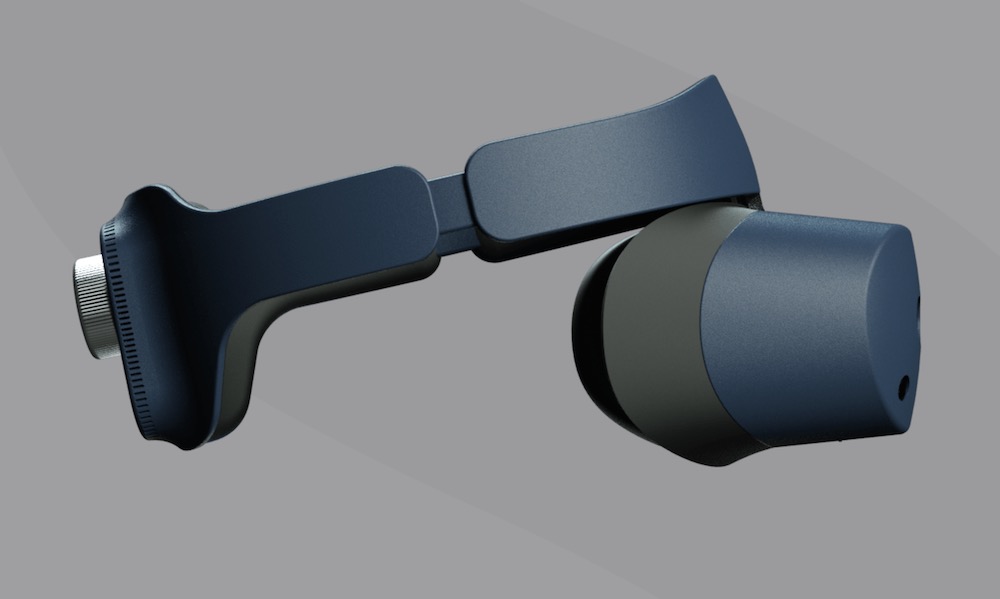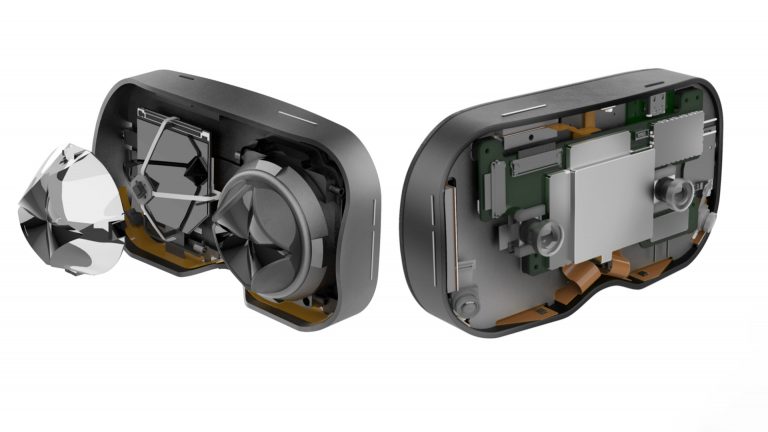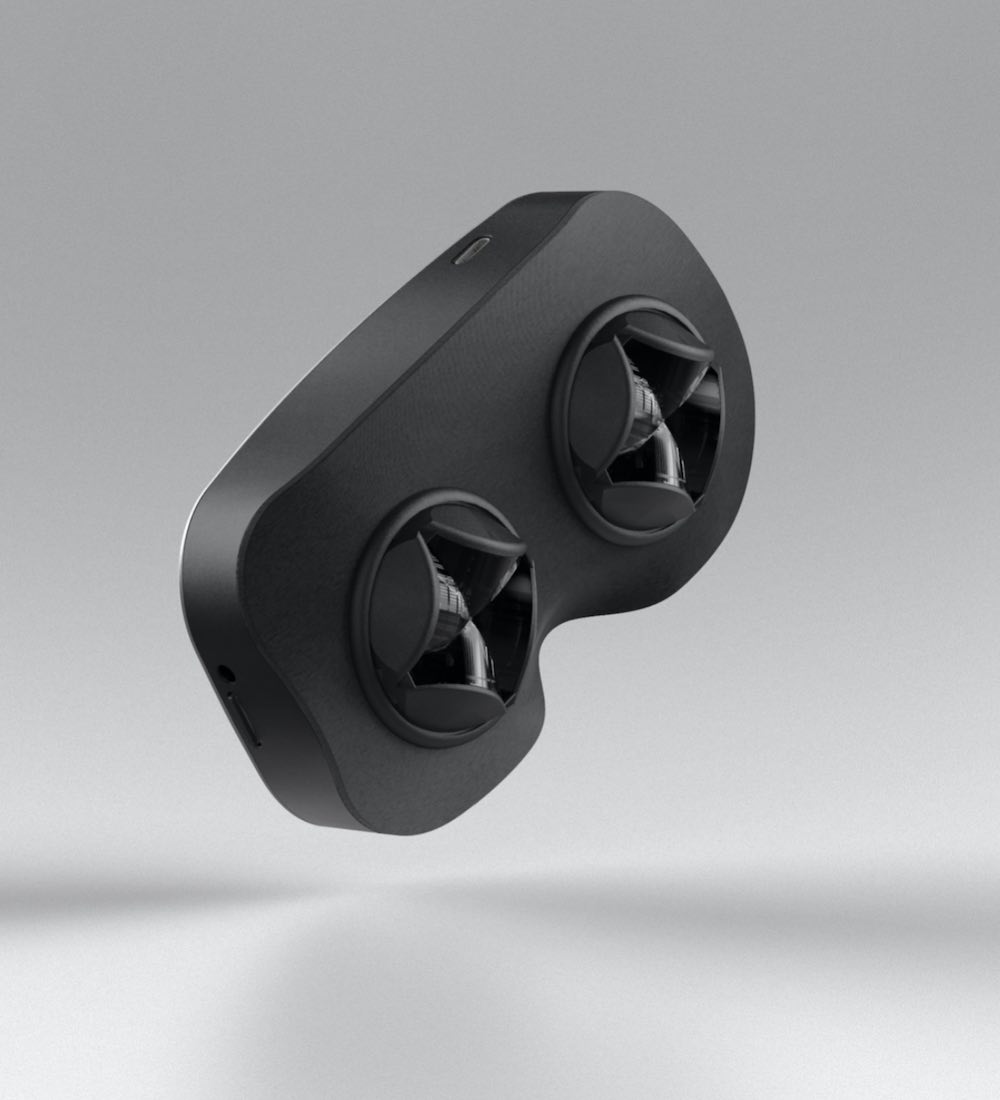LYNX-R1 Headset Reveals Compact Redesign and Unique Lenses
The Parisian startup LYNX is planning to launch the first standalone mixed reality headset known as Lynx-R1. In a YouTube reveal, the company showcase a mixed reality device with a narrow and compact form-factor that can be put into both VR and AR use-cases.
LYNX introduced its MR headset in early 2020, a device that can be used for both virtual reality and passthrough Augmented Reality. The redesign it revealed on 24th July 2020 looks more compact and aims to optimize on the user’s peripheral view for passthrough augmented reality. The first LYNX-R1 Mixed Reality headsets are set to begin shipping in September this year. The headset is priced at $1,500 and is targeting the enterprise market.
LYNX’s plans for this year had been thwarted by the COVID-19 pandemic but in a YouTube update, the startup’s founder Stan Larroque showcased what his team has been up to over the past few months, presenting a completely new design of the mixed reality headset.

The device that LYNX presented in February this year still looked like a conventional virtual reality headset. It featured two front cameras which filmed the surroundings and streamed the images to the displays where they were expanded via digital elements. This is what makes see-through mixed reality possible in the device.
A Compact Redesign
The new LYNX-R1 device that was featured last Friday features a more compact redesign. Early this year when LYNX first unveiled the headset, it had attributed its compact design to its novel “light folding” optics which reduces the distance between the lenses and the display while also helping ‘hide’ eye tracking camera which is right at the center of the lens.

In the redesign it revealed last week, we can see an even more compact form-factor that is aimed at maximizing the peripheral field of view of the user when the device is used in the AR mode. LYNX seems to have realized the reduction in the device size by making its four cameras (of which two are for passthrough and two for tracking) thinner while moving more of the components to the back of the MR headset.
The narrow form-factor was also realized thanks to a new lens design that significantly reduces the distance between the display and the lenses. These special lenses had already been used in the old LYNX model but the startup has clearly been able to miniaturize the technology. Below is an image of the optical module including the special lenses.
Maximizing the Peripheral View
For Augmented Reality, the LYNX-R1 makes use of the passthrough view from the cameras to enable the user to “see through” the device and into the real world. It can project virtual images onto this passthrough view to generate the augmented reality experience. The passthrough approach results in a much wider field of view along with full opacity and brightness over the virtual objects. This is a much-improved functionality compared to the transparent displays in the other augmented reality headsets. The downside with the passthrough view is that it is not very high-resolution and you won’t get the kind of clarity that you would have if your eyes were seeing the real world via a transparent display.

The LYNX-R1 is built with a face gasket that keeps out the light when it used in a purely virtual reality mode. In the augmented reality mode, his face gasket can be removed to enable users to see the real world through their peripheral version.
According to Lynx, the front module of the R1 headset has a geometry that has been uniquely designed to maximize on the real-world peripheral view of the user by reducing the gap between the device’s display and the user’s peripheral vision.
LYNX-R1 Specifications
The latest Lynx-R1 specs shared y the company are as follows: –
Display Specifications
- 90-degree circular field of view
- 90Hz refresh rate.
- A physical IPD adjustment
- 1699 x 1600 LCD display per eye
Hardware Specifications
- Qualcomm Snapdragon XR2
- An optional 5G module
- 6GB RAM (LPDDR5)
- 528GB Storage plus a microSD expansion slot
- USB-C, Bluetooth 5 and Wi-Fi 6
Features
- Hand-tracking
- Up to 3 hours’ battery life
- Eye-tracking
- It will have compatibility with both the 3DOF and 6DOF controllers.
Release Date
When the Lynx headset was unveiled early this year, the company began taking preorders with the expectation that the shipments would begin in summer this year. While the preorders will proceed, the company announced that the COVID-19 pandemic delayed the production and shipment plans but it gave the timeline for the redesign of the headset. The mixed reality headset would go into production in September with the first units set to ship in late September.
White Label and the Next Funding Round
One interesting revelation during the announcement was that Lynx is planning to issue the headset as a “white-label” product in addition to selling it directly to consumers. This will enable the headset to be customized for specific branding and hardware requirements. In line with this new approach, LYNX has already built a custom version of the headset for a client which has been incorporated with HDR cameras on the front part of the headset to enable users to see in workplace scenarios that are too bright for normal viewing such as when one is welding.
Lynx also announced that it is raising a Series A investment which would come after the $2 million in early funding that the startup raised in 2019.
https://virtualrealitytimes.com/2020/07/26/lynx-r1-headset-reveals-compact-redesign-and-unique-lenses/https://virtualrealitytimes.com/wp-content/uploads/2020/07/LYNX-R1-Compact-Redesign-1-600x338.jpghttps://virtualrealitytimes.com/wp-content/uploads/2020/07/LYNX-R1-Compact-Redesign-1-150x90.jpgMixed RealityTechnologyThe Parisian startup LYNX is planning to launch the first standalone mixed reality headset known as Lynx-R1. In a YouTube reveal, the company showcase a mixed reality device with a narrow and compact form-factor that can be put into both VR and AR use-cases. LYNX introduced its MR headset in...Sam OchanjiSam Ochanji[email protected]EditorVirtual Reality Times - Metaverse & VR
